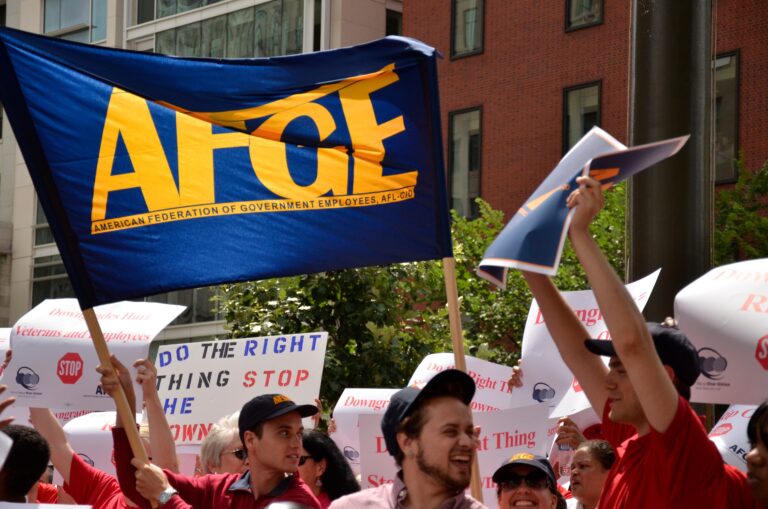Jon Weinberg is a student at Harvard Law School.
A new report has found that, since the adaptation of new rules by the National Labor Relations Board, unionization elections have both sped up the elections process and increased the number of union wins. Bloomberg BNA reports that when comparing a four-month period following the rule change to the same period the previous year “the NLRB resolved more elections than in the same period the previous year; these elections were resolved more quickly; unions prevailed more frequently; and the overwhelming majority of the quickest elections went labor’s way.”
Wisconsin’s public-sector unions have regrouped and changed tactics in response to laws passed at the urging of Gov. Scott Walker. Steven Greenhouse writes in The Guardian that unions have used messaging to emphasize the importance of unions to encourage the payment of dues. According the union leaders, the state legislation has had a crippling effect on the ability of workers to complain about problems like under-staffing.
New York Gov. Andrew Cuomo has raised the minimum wage for state university workers to $15 an hour, but not everyone is happy. The New York Times reports that the executive measure will affect about 28,000 workers for the State University of New York system and entail gradual, geographically-segregated wage raises. While a representative of the Civil Service Employees Association welcomed the action, Politico New York reports that that it will not apply to workers for the City University of New York system. Barbara Bowen, the head of CUNY’s faculty and staff union, said that “Lifting the wage floor for fast-food workers, state employees and now SUNY workers is the right thing to do…Governor Cuomo listened to the growing demand from workers, students, labor unions, faith leaders and others. But singling out CUNY’s workers on the state payroll for exclusion is a monumental failure of progressive leadership.”
The mechanization of labor might be more to blame than other countries for the loss of American manufacturing jobs. The New York Times reports that pledges by presidential candidates to revive lost manufacturing jobs “are meant to appeal to disaffected workers, but they both oversimplify the problems and ignore the real source of trouble.” Economists and policy experts note that mechanization has been occurring since the 1950s and changed the skills needed to succeed in the modern workforce, so candidates should focus on education and innovation rather than restoring jobs that have been permanently lost to robots. Lawyers and others, however, might have less to worry about. The New York Times also reports that new studies suggest relatively few jobs can be completely automated. Furthermore, “even the most advanced A.I. technology would at best make only modest inroads into the legal profession.”
Finally, The American Prospect has highlighted a list of labor and employment issues to watch in 2016. They include right-to-work laws, the fate of public sector unions, the Fight for $15 movement, Department of Labor rules, the gig economy, and media coverage of organized labor.






Daily News & Commentary
Start your day with our roundup of the latest labor developments. See all
December 5
Netflix set to acquire Warner Bros., Gen Z men are the most pro-union generation in history, and lawmakers introduce the “No Robot Bosses Act.”
December 4
Unionized journalists win arbitration concerning AI, Starbucks challenges two NLRB rulings in the Fifth Circuit, and Philadelphia transit workers resume contract negotiations.
December 3
The Trump administration seeks to appeal a federal judge’s order that protects the CBAs of employees within the federal workforce; the U.S. Department of Labor launches an initiative to investigate violations of the H-1B visa program; and a union files a petition to form a bargaining unit for employees at the Met.
December 2
Fourth Circuit rejects broad reading of NLRA’s managerial exception; OPM cancels reduced tuition program for federal employees; Starbucks will pay $39 million for violating New York City’s Fair Workweek law; Mamdani and Sanders join striking baristas outside a Brooklyn Starbucks.
December 1
California farmworkers defend state labor law, cities consider requiring companies to hire delivery drivers, Supreme Court takes FAA last-mile drivers case.
November 30
In today’s news and commentary, the MSPB issues its first precedential ruling since regaining a quorum; Amazon workers lead strikes and demonstrations in multiple countries; and Starbucks workers expand their indefinite strike to additional locations. Last week, the Merit Systems Protection Board (MSPB) released its first precedential decision in eight months. The MSPB had been […]